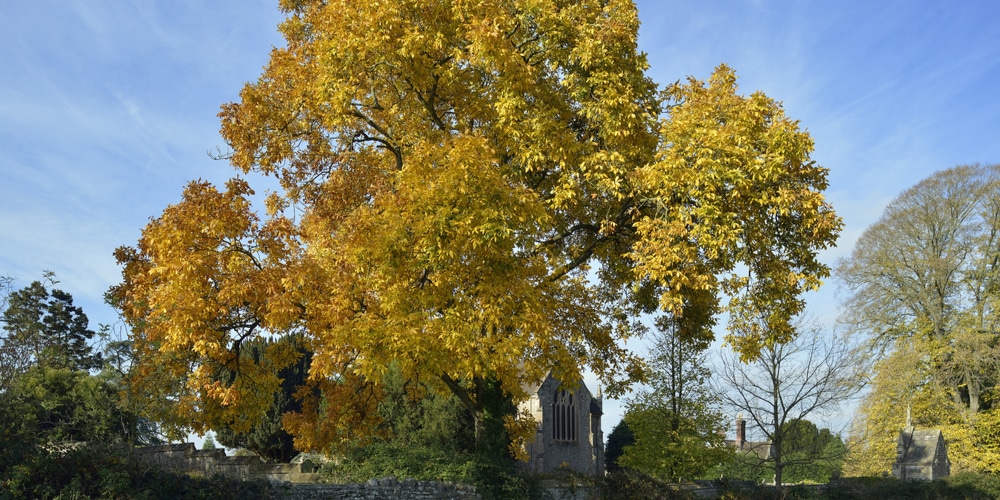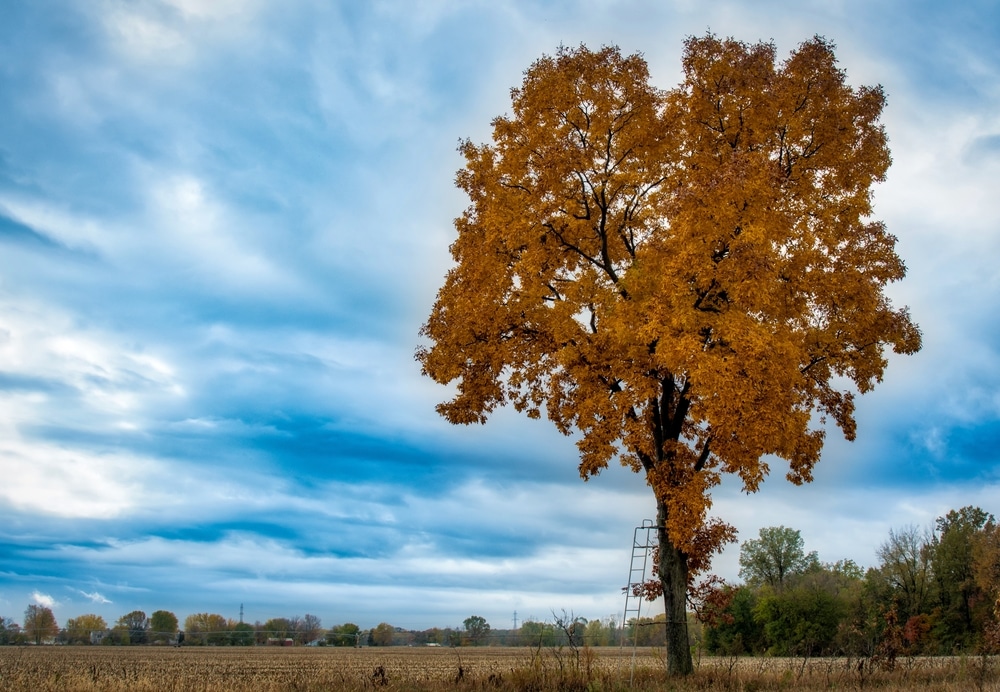Hickory trees abound in Maryland, with several species being native there. However, you can find Hickory trees thriving in places as north as central Maine and as far south as Mexico.
We’ll help you understand the types of Hickory trees you can grow in Maryland, emphasizing the state’s native varieties.
Types of Hickory Trees That Grow in Maryland

Below are the Hickory trees that grow in Maryland with their corresponding scientific names.
- Bitternut Hickory (Carya cordiformis)
- Mockernut Hickory (Carya cordiformis)
- Pignut Hickory (Carya glabra)
- Sand Hickory (Carya padilla)
- Shagbark Hickory (Carya ovata)
- Shellbark Hickory (Carya laciniosa)
Of the types of Hickory trees, the Sand Hickory is the only one that isn’t native to Maryland. Instead, sand Hickory trees originate farther south in the southeastern United States, where they have more access to the sandy soil they love.
Do Hickory Trees Grow in All Parts of Maryland?
Yes, you can find Hickory trees growing throughout Maryland. However, some of these trees have a preference for specific Maryland geographies and soil conditions.
Below is an overview of where the native types of Hickory trees typically grow in Maryland.
Bitternut Hickory
Bitternut Hickories abound in Frederick County. You can also find them in parts of Maryland with wet bottomlands or moist woods. But generally speaking, these trees congregate in midland counties.
You can expect Bitternut Hickories to grow taller than most other Hickory trees you encounter in Maryland, as they can reach 100 feet tall. These trees produce gorgeous yellow leaves come the fall, and they tend to maintain their colors and leaves longer than other Hickories.
Mockernut Hickory
Mockernut Hickories belong to the walnut family. Unlike Bitternuts, Mockernut Hickories prefer drier conditions. For this reason, it’s common to encounter them growing on arid, uphill lands and ridges across Maryland.
These trees average an adult height of 50 to 60 feet, and they grow male and female flowers on a single tree, meaning they can fertilize themselves. It’s possible to eat the nut inside the pear-shaped fruit that the Mockernut Hickory tree produces, which has a sweet flavor.
Pignut Hickory
Pignut Hickory trees aren’t picky about what part of Maryland they call home—they thrive in mountainous, coastal, and piedmont regions. Furthermore, they can tolerate areas with full or partial sun. However, it’s common to encounter them in open pastures in Maryland.
You’ll also see a higher-than-average concentration of Pignut Hickories growing on Bear Island and bedrock-terrace sections of the Potomac River gorge. These trees produce gorgeous orange foliage in the autumn.
Shagbark Hickory
Shagbark Hickory trees require nutrient-dense soil, which is why you’ll most commonly encounter them in Maryland’s mountains. They also grow in larger quantities in counties to the north.
What makes the Shagbark Hickory stand out from other varieties on this list is that it has thin, furrowed gray bark that pulls away from the main trunk, giving it a “shaggy” look compared to other Hickory trees. In addition, shagbarks are a moderately tall type of Hickory, averaging close to 90 feet tall. The largest Shagbark Hickory in the U.S. calls Anne Arundel, Maryland home.
Shellbark Hickory
Admittedly, Shellbark Hickories are rare to encounter in Maryland. These trees prefer wet soil, so if you get lucky enough to stumble across them, it’s common to find them in low-lying areas.
Some people mistake Shellbarks for Shagbarks. However, you can distinguish Shellbarks based on their thicker husks. They also only have five leaflets, whereas Shagbark Hickories often have more.
Are You Ready to Plant a Hickory Tree in Maryland?
It takes an average of 20 years for a Hickory tree to reach maturity. So, getting started soon is vital if you decide this is a tree you want to plant in your yard.
The good news is you’ll be able to enjoy your tree for the duration of your life since Hickories can live for 200 years or longer.
